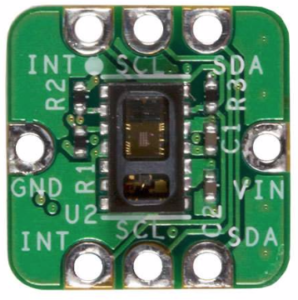Update #5: Week of February 3
This week, we made air bladders for our first prototype of the automatic compression sleeve, attained SpO2 readings from our pulse oximeter, attempted to solder lead wires to knotted ends of our soft potentiometers, and continued to work on the evaluation board for bioimpedance measurements.
Compression:
With regard to compression, this past week we searched for air pumps that we could control using an Arduino in order to inflate and deflate the air bladders for our device. While we researched potential pumps, we created a prototype pump and air bladder system by disassembling the automatic air pump system from the blood pressure monitor system and interfaced it with air bladders that were heat sealed together. We were able to successfully control the air pump and inflate our simple air bladders.

Limb volume:
Last week, we were able to attain readings from our soft potentiometers. We saw an 80 ohm difference between stretched and relaxed wound potentiometers. This week, we tried to solder lead wires to the knotted ends of potentiometers, but the conductive fabric burned. Additionally, the potentiometers are not sensitive enough for our purposes. Next week, we plan to build an amplifier circuit to get a greater signal from the potentiometers and also sew them into our compression sleeve using conductive thread.
We also ordered conductive rubber strain gauges because we want to use a more sensitive sensor. These rubber cords have 50-70% length deformation, are 350 ohms/inch, and appear to be more durable than the soft potentiometers. The soft potentiometers we currently have easily fray.
Additionally, this past week, we attempted numerous times to install the software required to run the bioimpedance circuit however we kept running into errors. The software repeatedly fails to recognize the bioimpedance evaluation board when it is plugged in and therefore does not allow us to take bioimpedance measurements. We are still in contact with Analog Devices to solve these issues.
Next week, we plan to make an agar phantom to test our sensors on. We will follow a standard recipe from Dr. Grissom’s lab.
Wound Perfusion:
We ordered a new reflectance based pulse oximeter, the MAXEEFDES, that is smaller and less convoluted to operate with compared to the Nonin pulse oximeter. The MAXEEFDES has open source code and has a full data sheet with instructions that allows us to easily communicate to it the Arduino via I2C. We were successfully able to power the device and receive oxygen saturation and heart rate data from the device. Below is a picture of the data that was returned from the IC via Arduino.


Given the small size of the MAXEEFDES pulse oximeter, in order to integrate it into our design without destroying it we designed a 3D CAD model that will be used to house the small IC. Below is the prototype CAD design that we will attempt to build. Ideally this design will protect the IC while ensuring sufficient contact with the skin to obtain oxygen saturation measurement.

Miscellaneous:
In order to interface the numerous sensors and transducers we have in our project, we ordered the following DB9 connector cables to compactly wire all of the sensors to our Arduino. This connector, in combination with a DB9 terminal end, will allow us to easily interface the multiple analog inputs to the Arduino.

Parts to order:
Elastic leg straps for the pulse oximeter.
Agar powder
Flexible stretch sensors
Linear force sensitive resistors
DB9 solderable wires
DB9 terminal plugs